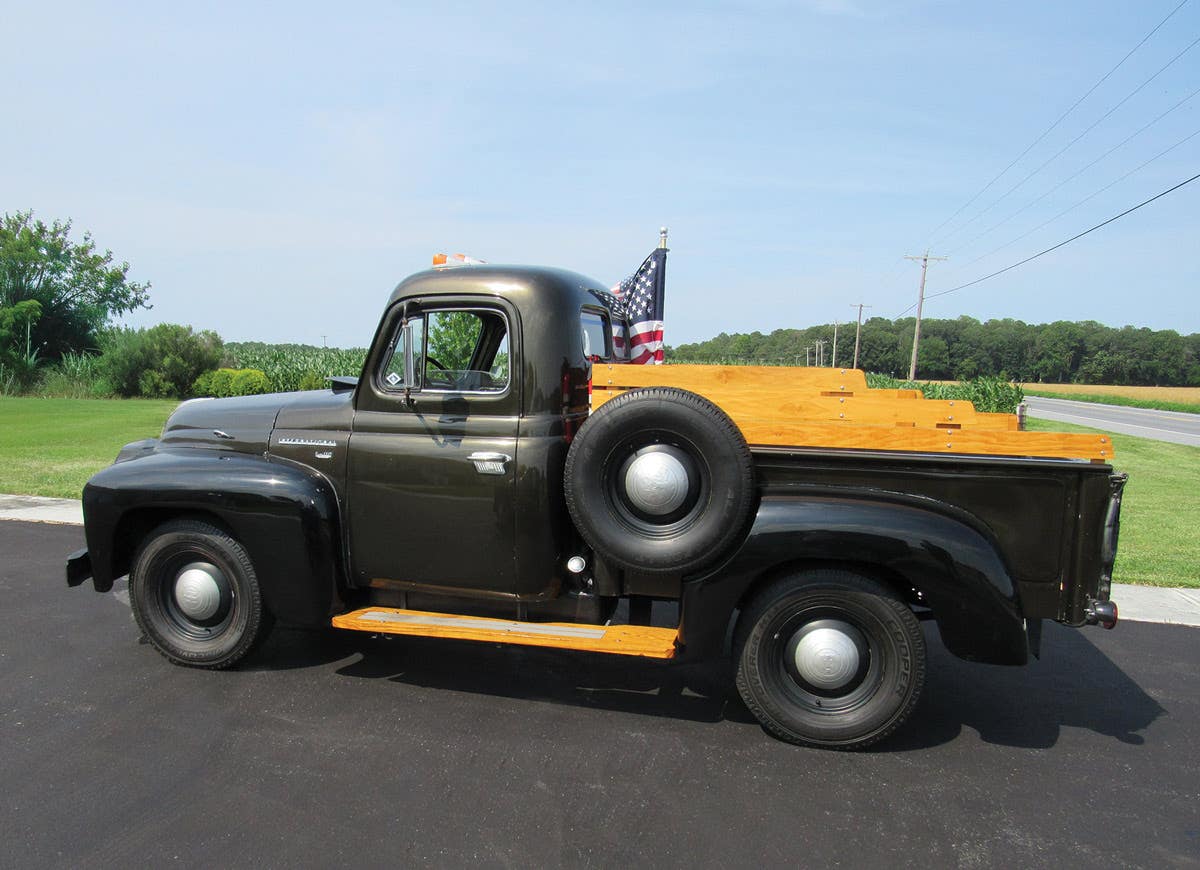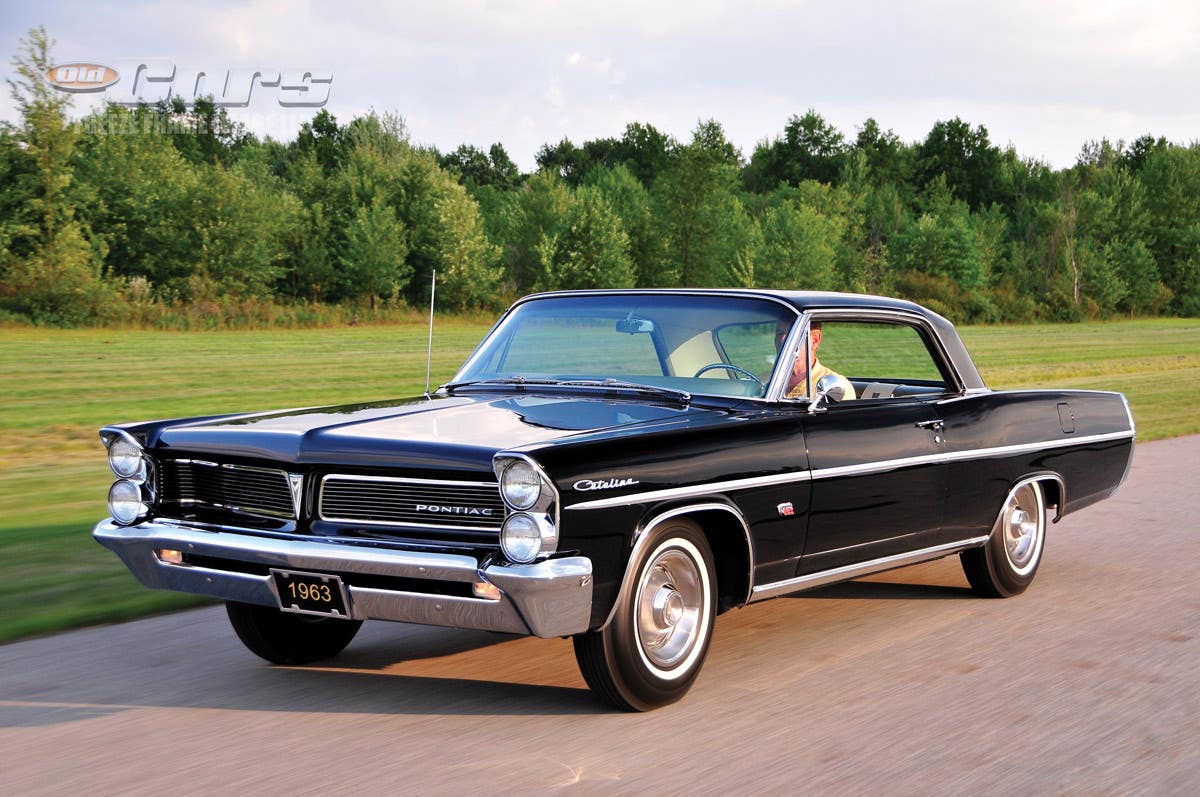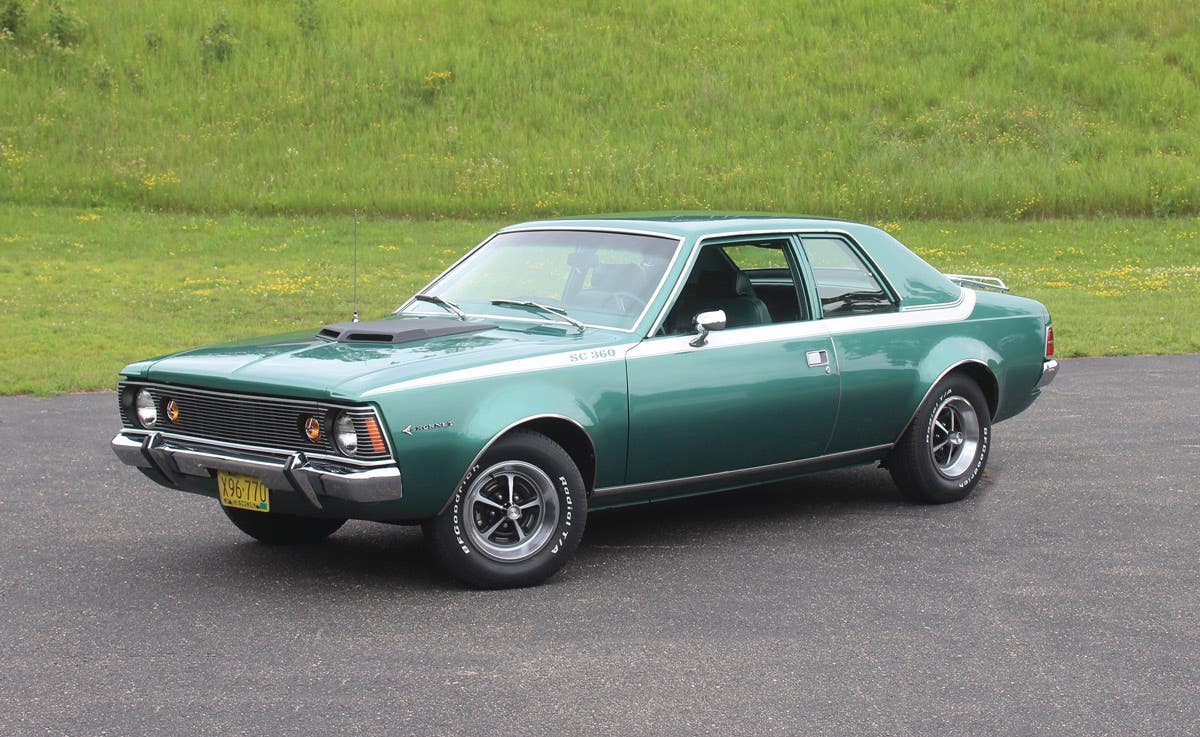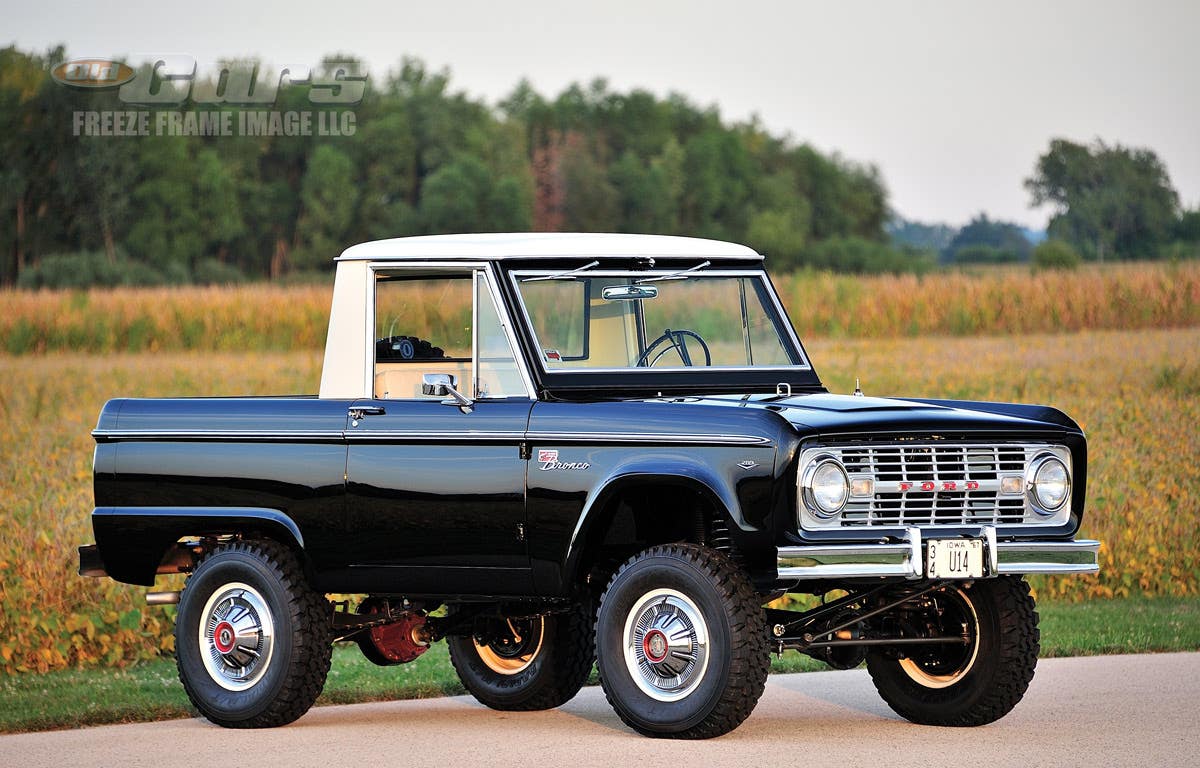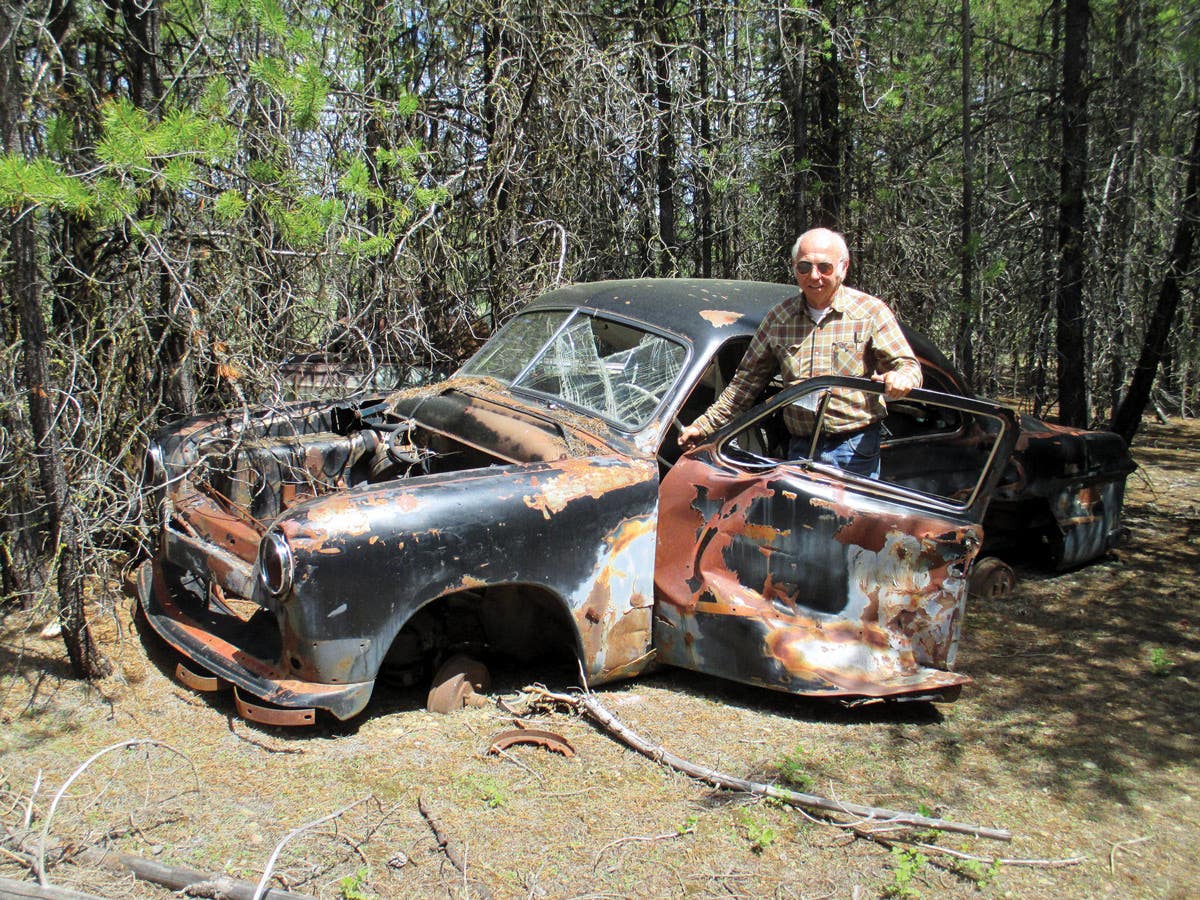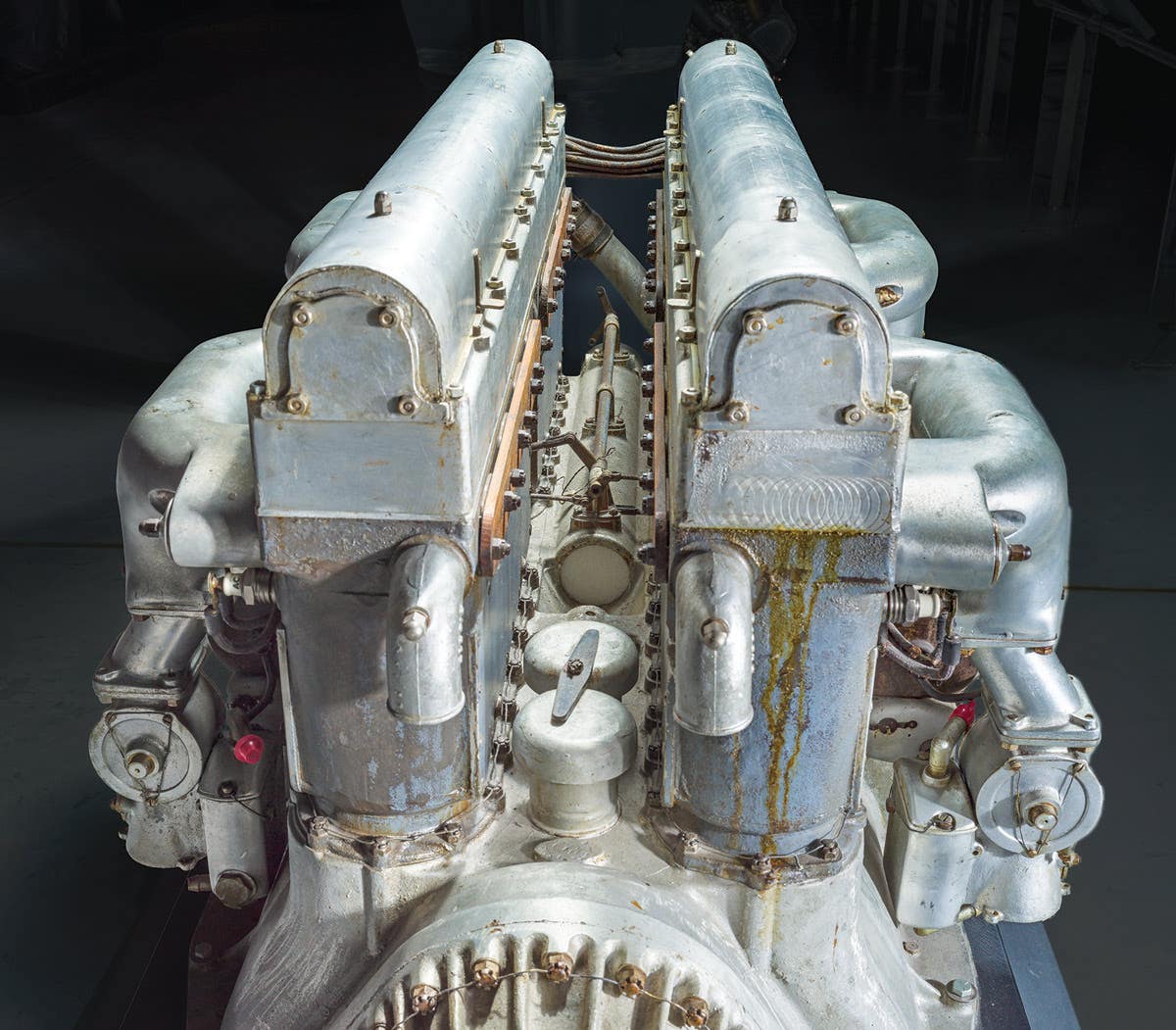Car of the Week: 1979 International Scout SSV-100 Coupe prototype
There was once an idea for an International Harvester (IH) Scout SSV-100 coupe back in 1979. This is the story behind the prototype.
and the possibility of mass production of a small 4x4 IH product. Freeze Frame Image LLC
The transformation of a vehicle design on paper to reality on a production line is a long, arduous process. One step in the process is building a full-scale prototype, something that can be fully visualized before any final adjustments or refinements are made for the completed, finished product. In the automotive world, prototypes are regularly scrapped, or bits and pieces are used in the prototyping of other projects. Other times, forward-thinking individuals see the value of saving a prototype from a canceled project, which was the case for the International Harvester (IH) Scout SSV-100 coupe featured here.
Developing a prototype IH
Let’s take a step back first. In 1975, IH was financially struggling. As a means to reduce overall spending, the Chicago-based IH headquarters began a move to concentrate on medium- and heavy-duty trucks for its lineup, i.e., vehicles rated at 1-1/2 tons and greater. This was done despite market-based research that saw the growth in sales and registrations of the sport/utility vehicle. The International Motor Truck Division, which built the “Light Line,” saw its line of 1/2-ton to 1-1/4-ton trucks discontinued when IH began to concentrate on its medium- and heavy-duty trucks. Only the Scout was left remaining.
Also in 1975, IH authorized the continuation of a project aimed at designing and creating composite bodies for the Scout and commercial truck line. IH had been interested in the idea of using composite bodies as a means to both simplify the body design process and lower the overall production cost for new body designs. Following the re-structuring of the company, now was the time to begin developing and implementing the technology. The company hired Dr. Leo Windecker, who was an expert in composites and had previously utilized them to build an FAA-certified aircraft. While composite technology was still expensive at the time, IH set up a small research facility for Windecker in Midland, Texas, to develop a process for both profitability and mass production.
Windecker and the styling team began development in early 1976 with designs ranging from sporty four-wheel-drive SUVs to large motorhomes and minivans. Designs from a June 9, 1978, market research report included named designs such as a 6-8 passenger Mini-Van on a 118-in. wheelbase; the Family Cruiser, aimed at the first-time four-wheel-drive buyer, and on a 100-in. wheelbase; and the Sports Enthusiast, a four-wheel-drive off-roader also on a 100-in. wheelbase. Special care was taken to use a minimal amount of tooling and as many interchangeable parts as possible to lower costs and increase production capability. Approval was given by HQ for a fabric two-door “hatchback” style with a T-top to be built onto a current Scout chassis shortened to a 95-in. wheelbase. It was about this time that the Supplementary Scout Vehicle, or SSV, name was dedicated to the project. The name was appropriate as HQ wanted the project to come to market alongside the current production of Scouts. Initial ideas suggested the hatchback be limited to a 4,000-vehicle run for 1981. The idea was to have a low-volume, more-exclusive Scout sold at a higher selling price, resulting in higher profit per unit, as IH’s profit margins were lower than its competitors.
Building the SSV
It is important to note that the SSV is not to be considered as the Scout III. It is unclear if it would have kept the SSV name if it had made it to production, or if another name would have been used. There was a short-lived attempt around 1984 or 1985 for an unofficially named Scout III, but it never made it past the preliminary design stage.
The Scout plant in Fort Wayne, Ind., received the first composite body in February 1977. The material consisted of a combination of long-strand glass fibers placed in an epoxy resin for durability. As composite crash-testing results were very scarce, the body needed to be tested to the current government safety standards. A standard Scout chassis was shortened by 5 in. to attach the SSV bodies. Most were built solely for crash and road testing, although a few were detailed and polished and used as demonstrators and for show. Further testing required changes in the body design, structural shaping, and in the composite itself, which they found needed to crush in a way to control energy dissipation upon impact. They settled on a laminated fiberglass skin with an aluminum honeycomb core and selectively reinforced with Kevlar fibers in areas of high stress concentrations. Crash testing occurred on the Fort Wayne, Ind., road track just north of the factory. (The road track no longer exists today.) It is unknown how many of the SSV bodies and chassis were crash tested, but some figures estimated as many as 19 composite bodies.
As the testing and refinements went on, the body evolved to a two-door hatchback coupe with doors made from the same composite material, and a pop-up sunroof. The rear glass became hinged. As more results came back from the crash and road testing, the composite body itself went from a more simplistic seven-piece assembly to a more complicated 16-piece assembly. IH also moved to the standard Scout 100-in. wheelbase, likely to cut back on the cost of modifying or creating a new chassis for the line. Historians agree that a total of just three of these SSV coupes were fully completed as demonstrators and show cars. It is unclear if any of the SSV coupes on the 100-in. wheelbase were used for any type of crash testing. Overall, with both the 95- and 100-in. wheelbase SSVs, it is estimated that around 30 examples were built in total. I will refer to the 100-in. wheelbase SSVs as the SSV-100.
IH fans and historians alike know that what followed in 1979 was a great shame. In an attempt by CEO Archie McCardell to negotiate more company-friendly union terms and higher profit margins for the company, the United Auto Workers union led a strike that lasted nearly six months, from Nov. 1, 1979, to April 20, 1980 — a total of 172 days. At that time, it was the longest strike in UAW history. Some 35,000 workers from 21 plants (about 36 percent of IH’s workforce) in eight states joined the strike. Unfortunately for the SSV project, the strike resulted in the work being either completely stopped or greatly slowed. The backlash from the negotiations and the long strike resulted in production lines idling and vehicle output being slashed. The backlog from unfilled orders resulted in quarterly financial losses of nearly $500 million and sales sliding 47 percent.
In an attempt to help cover the losses, the Scout line was put up for sale in 1980, and IH began selling equipment. While a potential group of Texas buyers were courted nearly immediately, those talks quickly broke down and the group dissolved. As a result, the production of the Scout formally ended on Oct. 21, 1980. This, too, ended all work on the SSV project. As for the composite bodies that were built, IH chose to scrap them and part out those that were paired with a chassis. For those wanting to know the end of the IH story, in short, McCardell was fired in May 1982 after IH incurred $2.4 billion in losses from 1980-1982, despite refinancing more than $4 billion in debt to avoid bankruptcy. IH ended up restructuring by selling many of its divisions, such as the agricultural division to Tenneco, and re-branded the truck and engine divisions as Navistar International Corp. in 1986, which lasted until September 2024 when it rebranded as International Motors, LLC.
even in the rectangular parking lamps and grille openings. Freeze Frame Image LLC
Maintaining & displaying IH history
Today, there are just three complete SSVs known to exist. Two of the completed SSVs are on the 95-in. chassis and the other coupe is on the 100-in. chassis, the latter pictured in these photos. In addition, there remains three partially completed SSV chassis and two separate bodies. The vehicle on the 100-in. chassis is owned by the Auburn Cord Duesenberg Automobile Museum in Auburn, Ind. I have seen one of the bodies at the 2020 Harvester Homecoming event in New Haven, Ind., and it is a fascinating look back at the mind set and experimentation taking place at IH during the time.
The 1979 International Scout SSV-100 Coupe was donated to the Auburn Cord Duesenberg Automobile Museum on Nov. 20, 1983. It was driven from IH’s prototype shop to the museum on Oct. 26, 1983, for a special ceremony in celebration of the future donation. IH employees from the design team and engineering department chose to donate the SSV-100 to the museum, breaking the frequent pattern of corporations electing to destroy prototypes after obsolescence. At the time, the museum chose to display the SSV-100 as-is and opted to keep it inside its hallowed halls for preservation for future generations, and to keep a part of IH history alive. Even today, it is just as if it came out of the prototype shop.
The SSV-100 is powered by a 345-cid (5.6L) V-8 engine called the V-345, which utilizes a four-barrel carburetor and catalytic converter. It produces 150 hp at 3,500 rpm. The torque is rated at 263 lb.-ft. at 2,000 rpm. The compression ratio is 8.05:1. It is mated with a TF-727 TorqueFlite three-speed automatic transmission. It also utilized several parts from the Dana Corp., including the TC-145 transfer case and Dana 44 front and rear axles. It weighs 3,850 lbs. and was built with cruise control, power steering and power brakes to add to ease of driving. The original, sometimes troublesome, smog pump remains with the SSV-100, as it was implemented because of the Clean Air Act of 1970.
When you look at photos of the SSV-100 or see it in person at the museum, perhaps the most interesting part of the car is the body itself. It is very clearly a prototype body, but the more you look at the details, the more you can see that IH was close to moving to a finished product for production. It was placed on the 100-in. chassis from a 1979 Scout II Traveltop that came off of the line on March 20, 1978. The prototype shop removed the Traveltop body and placed the composite body on the chassis, which only required a few extra body mount bolts to fit. Just like the Scout II, the hood is forward-hinged, but is held down with two hood pins instead of a latch, which likely would have been replaced with a latching mechanism, perhaps the same as on the Scout II. The composite doors are very light and are held with nylon hinges and door strikers. The windows are fixed as there are no internal components in the door, but the bottom half was covered with the same vinyl as the rear compartment, so a window-rolling mechanism could have later been installed. The front grille is unique to the SSV-100 and shows an evolution in design beyond that seen on the Scout II.
window cranks as the door windows are not functional. Freeze Frame Image LLC
As for the interior, it overall feels bare, as befitting a prototype. The same composite material on the outside is also used on the inside, and in the same color. The durable two-tone brown and tan vinyl seats have held up well to time and fold forward to access the rear. Due to the slanted rear window, there are no rear seats. The same brown vinyl is used for the door interiors and the flooring. The dashboard is unique to the SSV-100, but most of the gauges come from the Scout II. In the middle, a cassette player and air conditioning controls are present and unexpected for most prototyping. As someone who has driven the SSV-100, the sunroof is a godsend, even in cooler days, and even with the rear quarter windows opened the few inches they move.
When the SSV-100 was donated to the museum, it remained on static display as an integral part of the “Cars of Indiana” gallery, where it remains today. As per museum standards, and in keeping with best practices with auto maintenance of the museum collection, the engine is rotated yearly and movable components kept free. It remained in the gallery for nearly four decades until 2020, when it was decided to bring the SSV-100 back to running order. With the assistance of Scout expert Jim Allen, and with some general mechanical maintenance and cleaning of the brakes and carburetor, the SSV-100 roared back to life. A quick run through the automatic transmission shifter showed that everything was functioning properly, and a few test drives took place on the museum plaza. It has since been displayed at the Harvester Homecoming for a few years and has been to the Miami Motorcar Cavalcade where it won an award. The museum continues to run the vehicle yearly and will endeavor to keep it running for years to come.
Behind the wheel of the SSV-100, it feels both durable and rugged. The view from the driver’s seat makes you feel in control of the vehicle and road. Riding on the original Goodyear Tracker A-T tires makes the ride feel a bit rough, and so I’ve kept its speeds to 30 mph. Those tires are just as much a part of the SSV-100’s history and will remain with it for as long as possible.
Special thanks
I would like to thank Jim Allen for his work on researching the SSV-100, which allows the museum to tell a more complete and more detailed story, as evidenced throughout this article. I would also like to thank Jim and our all-volunteer museum group that we call the “Pit Crew” for getting the vehicle back to drivable condition. Finally, but not lastly, I would like to thank Al Rogers for his help in getting the SSV-100 into publication, and for the fantastic and detailed professional photography of the vehicle that accompanies the article. The museum remains grateful for the donation as it has ensured the survival of the SSV-100 and its story by placing it in the permanent collection of the museum.
Sam Grate serves as curator of the Auburn Cord Duesenberg Automobile Museum. The museum is open from 9-5 daily. As the museum participates in several shows and concours d’elegance events, please call ahead to make sure the SSV-100 is on display before visiting. For more information on International Harvester and the Scout, “The International Scout Encyclopedia,” 2nd Edition, by Jim Allen and John Glancy, is a great source.
MORE INFO
Auburn Cord Duesenberg Automobile Museum
1600 Wayne St.
Auburn, IN 46706
260-925-1444 ext. 29
www.automobilemuseum.org
samg@automobilemuseum.org
*As an Amazon Associate, Old Cars earns from qualifying purchases.
SHOW US YOUR WHEELS!
If you’ve got an old car you love, we want to hear about it. Email us at oldcars@aimmedia.com
If you like stories like these and other classic car features, check out Old Cars magazine. CLICK HERE to subscribe.
Want a taste of Old Cars magazine first? Sign up for our weekly e-newsletter and get a FREE complimentary digital issue download of our print magazine.



